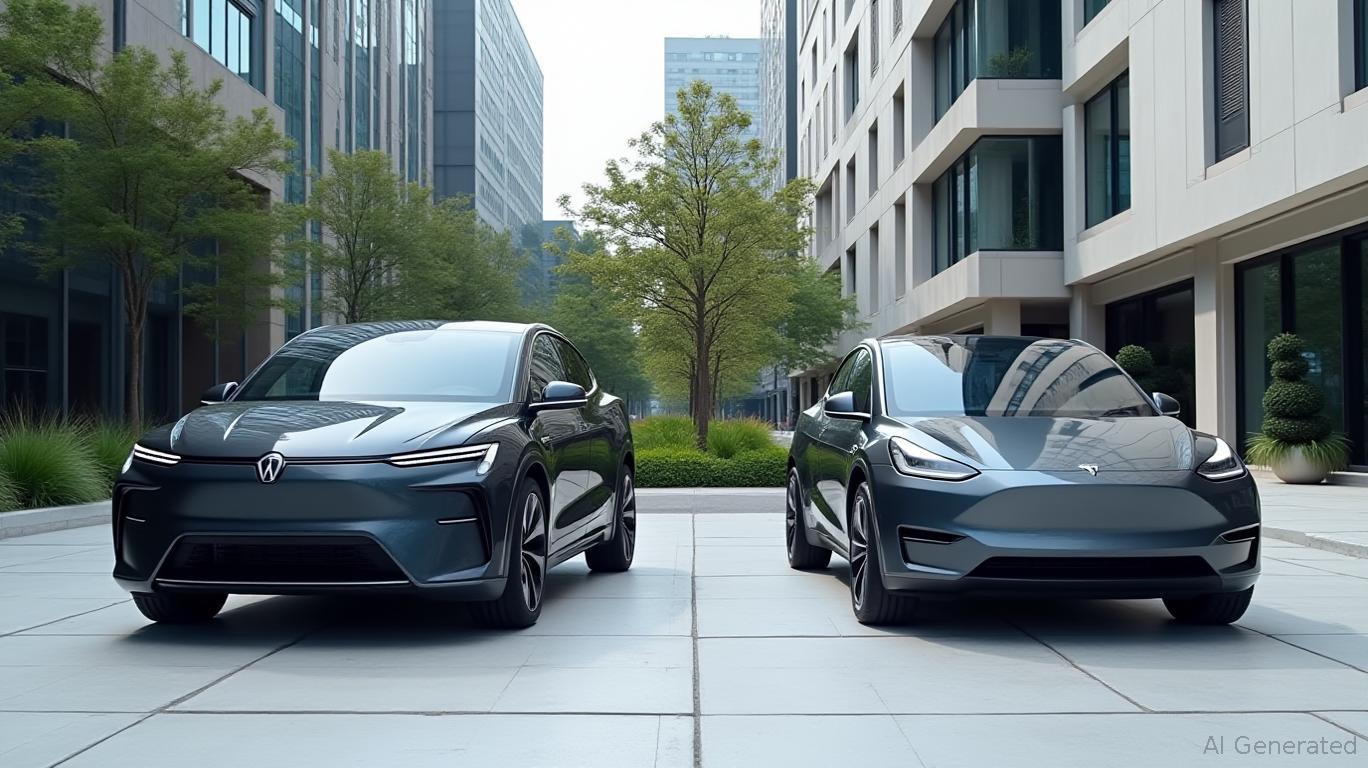The electric vehicle (EV) market is in the throes of a historic shift. Xiaomi’s YU7 SUV, launched in early 2025, has become a symbol of China’s EV ascendancy—and a stark challenge to Tesla’s dominance. With 289,000 pre-orders in its first hour, the YU7’s demand surge has created a production backlog stretching to early 2027. Meanwhile, Tesla’s market share in China has eroded, with sales declining 18% year-over-year in the first half of 2025. This article explores how supply chain constraints and demand elasticity are reshaping the EV landscape, and what it means for investors.

Xiaomi’s Production Bottleneck: A Test of Scale
Xiaomi’s Beijing factory, the linchpin of its EV ambitions, operates at full capacity. Phase 1 (F1), launched in 2024, produces 150,000 units annually. Phase 2 (F2), due online in June 2025, aims to double capacity to 300,000 units. Yet, even with F2’s completion, the 240,000 lock-in orders secured in the YU7’s first 18 hours would require over a year to fulfill. The entry-level YU7 variant, priced at CN¥253,800 (USD$35,360), faces the longest wait times (56–59 weeks), underscoring its popularity.
The challenge extends beyond the YU7. The SU7 sedan, Xiaomi’s first EV, now has delivery times of 41–50 weeks, as resources are diverted to meet YU7 demand. Scalpers exacerbate the problem by reselling lock-in orders, forcing Xiaomi to enforce non-transferable policies. To scale further, Xiaomi is acquiring land for a third Beijing factory phase (F3), though details remain vague.
Demand Elasticity: Xiaomi’s Pricing Power vs. Tesla’s Struggles
Xiaomi’s YU7 undercuts Tesla’s Model Y by 4% in China, starting at CN¥253,800 versus the Model Y’s CN¥278,000. This pricing edge, combined with superior specs—such as a 760 km range (vs. Model Y’s 660 km) and LiDAR-enabled autonomous driving—has made the YU7 a magnet for price-sensitive buyers. Xiaomi’s ecosystem integration (350 million IoT devices, Apple services compatibility) further attracts Chinese consumers.
In contrast, Tesla’s China sales have fallen 18% year-over-year through May 2025. The Model Y’s week-over-week production surge in late June (85% increase) highlights pent-up demand, but its YoY sales remain down 30% amid price wars. Tesla’s April price cut of $11,000 for the Model Y and regulatory scrutiny over Autopilot safety have dented its premium positioning.
Investment Implications: Growth vs. Valuation Risks
Xiaomi:
– Upside: Xiaomi’s EV division is projected to breakeven by late 2025, with a 12.5x P/E ratio—far below Tesla’s 47x P/E. Its ecosystem-driven pricing model and 15–20% China midsize SUV market share target by 2026 make it a compelling long-term play.
– Risks: Supply chain bottlenecks and F3’s feasibility pose execution risks. Scalping and regulatory hurdles (e.g., China’s EV subsidy rules) could slow adoption.
Tesla:
– Upside: Tesla’s V4 Superchargers and planned compact EV (2025 launch) aim to reclaim market share. Its global brand power and software monetization (Autopilot, Full Self-Driving) remain unmatched.
– Risks: China’s preference for local brands, cost pressures, and overvaluation relative to growth make Tesla vulnerable to margin compression.
The Bottom Line: Position for Disruption, Hedge Against Volatility
Investors should consider:
1. Long Xiaomi: For exposure to China’s EV growth, particularly if F2/F3 expansions proceed smoothly. Monitor its Q3 2025 production data and YU7 delivery timelines.
2. Short Tesla: On valuation and China-specific risks. However, avoid overexposure to Tesla’s global supply chain resilience.
3. Sector Diversification: Pair bets with broader EV plays like BYD (HK:1211) or NIO (NIO), which benefit from subsidy tailwinds and ecosystem synergies.
The EV market is now a zero-sum game. Xiaomi’s YU7 backlog is both a strength and a vulnerability—it signals demand but tests Xiaomi’s ability to scale. Tesla’s decline in China, meanwhile, underscores the perils of complacency in a fast-evolving sector. For investors, the path to profit lies in backing disruptors with execution muscle, while hedging against overvalued incumbents.
Final Take: Xiaomi’s supply chain challenges are temporary, but its pricing and ecosystem advantages are structural. Tesla must cut costs and innovate faster to retain relevance. Investors ignoring this shift risk missing the next phase of EV leadership.
Data as of June 19, 2025. Past performance does not guarantee future results. Consult a financial advisor before making investment decisions.







